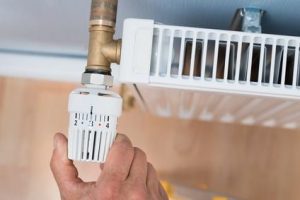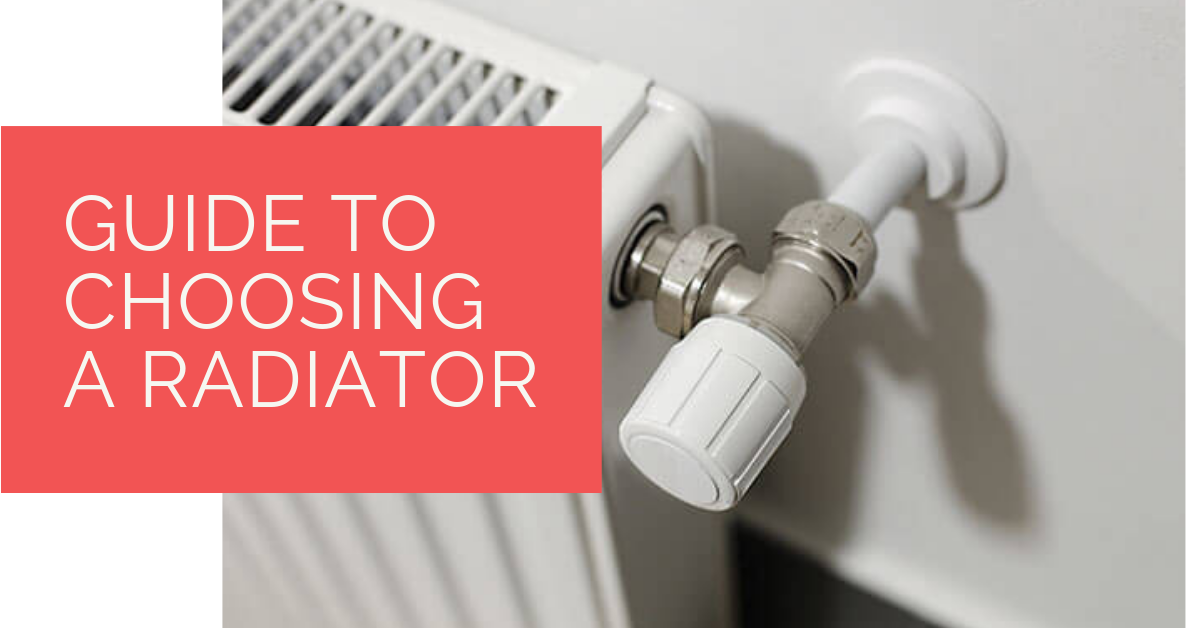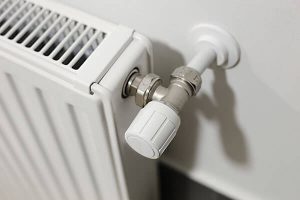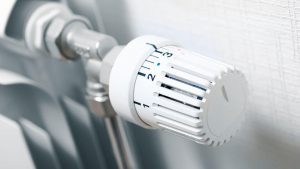Buying a radiator may not be as simple as you think. With so many models, designs, and features, you will be spoilt for choice. So, if you are planning to purchase a radiator soon, you can follow this guide.
Contents
- 1 Key Takeaways
- 2 What are the Different Types of Radiator?
- 3 Understanding Single and Double Panel Radiators
- 4 What’s the Difference Between Horizontal or Vertical Radiators?
- 5 What’s the Difference Between Panel, Columns, and Convector Radiators?
- 6 Understanding Heated Towel Rails and Ladder Rails
- 7 What is BTU?
- 8 What Size Radiator Do I Need?
- 9 What Are the Different Radiator Materials and Their Benefits?
- 10 Case Study: Optimising Home Heating with the Right Radiator Selection
- 11 Expert Insights About Choosing a Radiator
- 12 Heat Pump Source: Reliable Heating and Cooling Solutions
- 13 Conclusion
Key Takeaways
- The article provides a comprehensive guide on different types of radiators, including central heating, electric, and dual fuel radiators, and insights on single and double-panel designs.
- Design considerations such as horizontal vs. vertical radiators, panel vs. column vs. convector designs, and the importance of BTU in determining heat output are discussed.
- Material choices like aluminium, stainless steel, mild steel, and cast iron play a crucial role in the radiator’s efficiency, longevity, and cost.
What are the Different Types of Radiator?
There are a few essential things that you need to know about the types of radiators that will help to choose the best model for your house. The different radiators that you will come across are:
1. Central Heating Radiators
Central heating radiators are also known as plumbed radiators. These are the most common radiators you will find in a house. The technology is age-old where a metal container heats the hot water inside using a boiler. The heat will then spread into your house slowly. However, the rate at which the heat spreads depends on the size, design, and material of the radiator. If you are fond of traditional radiators and seen them in the house of your relatives and friends, go for it.
2. Electric Radiators
As the name suggests, these radiators run on electricity. They don’t have the water-heating technology like central heating radiators. Instead, their container is filled with a thermo-fluid. A unique electrical element heats the thermo-fluid to produce the heat that escapes into the rooms of the house. One of the reasons why electric radiators are superior to the central heating variant is you can control the temperature. If you don’t require the room to be too hot, you can turn down the temperature to make it more comfortable. Plug the radiator to the nearest power socket and enjoy.
3. Dual Fuel Radiators
Dual fuel radiators support both central heating and electric technology. That’s why they are more expensive than the other two variants. In this model, the central heating radiator will have the mains powered using a special summer heating element. Since this element remains inside the central heating radiator, you have two options while switching the unit on. So, if for some reason the central heating is off, you can still use the radiator using electricity. Many families living in locations with extreme weather conditions consider buying dual fuel radiators.
Understanding Single and Double Panel Radiators
Apart from the above three types of radiators you also have single or double panelled radiators. They are also known as flat or convector radiators.
Single panel radiators – experts believe that hot water containers should be the better name for these radiators. These are the basic radiators that are available in almost most of the houses. There is only a single panel facing outwards, and mounted on the wall. However, you can split them into several columns if you have more space. Since these panels are thinner, they fit closer to the walls.
Double panel radiators – these are nothing but two single panels stacked together to produce double power than the single panel variant. However, they stick up significantly from the wall because of the double panel structure. Depending on the space you can afford, you can choose between single or double panel radiators.
What’s the Difference Between Horizontal or Vertical Radiators?
Keeping the technology aside, you can also choose radiators based on their design. Plan on where you want to install the radiator, and then decide from the below:
Horizontal radiators – these have a more conventional design with the width of the radiator more than the height. They are comparatively easier to install because of their design. You can use them under the window to keep the cold draughts warm. This is the safest design because it usually fits everywhere. Moreover, there are plenty of choices, and they are less expensive.
Vertical radiators – these are more decorative, and while they can still save some space depending on where you install them, their price is more than the horizontal radiators. If you want a stylish radiator in your house, you can go for the vertical variants. There are many designer vertical radiators that will add a style statement in your house.

What’s the Difference Between Panel, Columns, and Convector Radiators?
The design of the tubes and containers are also factors that you should consider while choosing radiators:
Column radiators – these look like a single panel vertical radiator. The tubes arranged in rows are only connected at the bottom and the top. This forms a single panel. They are also known as Victorian radiators because of their traditional design.
Panel radiators – these radiators come with a thin container that contains a boiler. The boiler heats the water to keep the rooms warm. It follows the same technology as central heating radiators. Attaching a second panel makes it a double panel radiator.
Convector radiators – these are available in single and double panels with convector fins attached in a zig-zag form. These fins are welded between the two panels that are protected by a case with vents both in the top and at the bottom. This allows efficient air flow so that the room can heat up better.
Understanding Heated Towel Rails and Ladder Rails
People who experience very chilly winters should get ladder rails and towel rails. These radiators are primarily used to keep your towels warm and fluffy. A warm towel is always comfortable when you come out of the bath. Apart from drying the towels and keeping them warm, these radiators can also keep your bathroom heated. However, the capacity of these radiators is low compared to the variants discussed above. So, you shouldn’t expect them to heat up a big bathroom. Many of these radiators also have cut out slots where you can hang multiple towels
What is BTU?
BTU is the unit that measures the heat output of radiators. The higher the BTU, the hotter the radiator will get. On the flip side, more BTU means the radiator is consuming more energy. So, you will also have to keep an eye on the electricity bills. It is best to buy a BTU calculator while purchasing a radiator. This will help you monitor the heat output so that you can turn it down if the BTU is on the higher side.
What Size Radiator Do I Need?
This is the most crucial question that every homeowner has before purchasing a radiator. Now that you are aware of the different types of radiators and have an idea of their pros and cons, you need to decide the space you can afford for the radiator. Apart from the space, there are a few other factors that you need to consider – the material of the radiator and the size. These two have a direct impact on the BTU. Many people think that the bigger the radiator, the better it is for their house. Of course, the bigger the unit, the more heat it will spread. But, it will also give you a bigger electricity bill. Even a compact radiator with significant depth can function equally well as a bigger-sized radiator. So, bigger is always better is not the case here. Families also prefer to have two single panel radiators instead of a double panel to make them look more stylish. You should make your choice depending on your budget, the money you are ready to spend on electricity bills, and the space and design of the radiator.
What Are the Different Radiator Materials and Their Benefits?
As already mentioned, the heating ability of the radiator depends on the material with which it is made. There are pricier materials and there are cheaper materials. Again, the decision is yours depending on the budget. But, here are a few materials that you can choose from:
Aluminium
Aluminium, being a superconductor can start heating your house as soon as you switch the radiator on. Not just heating, aluminium radiators can also cool down almost instantly so that you can enjoy the perfect temperature in your home. Moreover, they are easy to install and are very lightweight. Easy installation also means lower installation fees. But, the price of these radiators is more than its competitors. If you are ready to invest on a quality radiator, then this is the one to get.
Stainless Steel
These can stay warm for a long time. So, even if you turn it off, it will keep the room heated for a while. Also, it doesn’t rust. They are cheaper than aluminium radiators. If you want quality, but don’t want to spend a fortune, stainless steel radiators will be the best to purchase.
Mild Steel
These are widely available and are very cost-effective. You will be spoilt for choice considering the designs and colours the manufacturers come up with. However, the quality is average.
Cast Iron
These are the traditional radiators, and it is better you don’t opt for them. They take ages to heat up or cool down. If you want the antique or Victorian look, buy from the stainless steel models.
With so many varieties around, purchasing a radiator will not be a daunting task anymore. Keep the facts in mind, and choose a suitable model for your house.
Case Study: Optimising Home Heating with the Right Radiator Selection
Background
Heat Pump Source was approached by a family renovating their Victorian townhouse. The clients wanted to upgrade their heating system, which consisted of old cast iron radiators, with modern units that would improve energy efficiency and match their home’s aesthetic. They sought advice on choosing the best radiators to suit different rooms, each with unique heating needs and spatial constraints.
Project Overview
The project aimed to replace outdated radiators with new, efficient models that provided adequate heat output while enhancing the home’s décor. The challenge was to select radiators that fit the aesthetic of each room and met specific heating requirements based on room size, insulation, and usage patterns.
Implementation
Assessment and Planning
- Room-by-Room Analysis: We measured each room’s dimensions and assessed factors like ceiling height, window type, and external wall exposure to calculate the required BTU for effective heating.
- Design Considerations: The homeowners expressed a preference for a mix of traditional and modern aesthetics. We suggested a combination of column and flat panel radiators to suit different spaces.
Radiator Selection and Installation
- Material Choice: For the living areas, we recommended aluminium radiators for their quick heat-up times and sleek appearance. In contrast, stainless steel was chosen for the bathrooms due to its resistance to corrosion and ability to retain heat.
- Design and Layout: Vertical radiators were selected for smaller spaces, like the hallway and bathrooms, to save space. Horizontal radiators were installed in the living and dining rooms to ensure even heat distribution under windows.
Installation Process
- System Upgrade: The old radiators were carefully removed, and the new units were installed. We ensured that all radiators were correctly sized according to the BTU calculations to prevent any areas from being under or over-heated.
- Final Adjustments: Thermostatic radiator valves (TRVs) were fitted to allow for individual room temperature control, enhancing energy efficiency and comfort.
Results
- Enhanced Comfort: The new radiators provided consistent and comfortable temperatures throughout the home, tailored to each room’s specific needs.
- Energy Efficiency: The upgrade resulted in a noticeable reduction in energy consumption, as the modern radiators were more efficient than the old cast iron units.
- Aesthetic Appeal: The selected radiators complemented the interior design, blending seamlessly with both traditional and contemporary elements of the home.
Summary
This case study illustrates the importance of a thoughtful approach to radiator selection, balancing functionality, energy efficiency, and design aesthetics. By carefully assessing the heating needs of each room and considering the client’s preferences, Heat Pump Source delivered a comprehensive solution that enhanced both the comfort and visual appeal of the home. Our expertise in the HVAC industry ensured that the new heating system was not only efficient but also aesthetically pleasing, demonstrating our commitment to quality and customer satisfaction.
Expert Insights About Choosing a Radiator
Selecting the right radiator isn’t just about choosing a design that complements your decor. It’s crucial to consider the radiator’s BTU rating to ensure it provides adequate heat for the space. The right balance of style and functionality can greatly enhance both comfort and energy efficiency in your home.
Lead Product Specialist
Material choice is a significant factor when selecting a radiator. Aluminium radiators, for example, offer quick heat-up times and are lightweight, making them a popular choice for modern homes. However, stainless steel and cast iron have their benefits in terms of durability and heat retention.
Senior HVAC Engineer
Understanding the differences between single and double panel radiators, as well as vertical versus horizontal designs, can help you maximise space and efficiency. A well-chosen radiator can effectively distribute heat and enhance the overall aesthetics of a room.
Design Consultant
Heat Pump Source: Reliable Heating and Cooling Solutions
At Heat Pump Source, we take pride in our unwavering commitment to serving the UK community with top-tier HVAC solutions. From the efficiency of heat pumps and the cool relief of air conditioning to the warmth of boilers, radiators, and underfloor heating, our dedicated team is always at the forefront of innovation. We understand the unique needs of every household and business, and we strive to provide dependable health and cooling products and services that are tailored just for you. Ensuring your comfort and satisfaction is our utmost priority. Whether you have questions, need guidance, or require support, we’re always here to assist. Please don’t hesitate to contact us; we’re eager to be of service.
Conclusion
Selecting the right radiator for your home involves understanding the various types, considering design aesthetics, and weighing the pros and cons of different materials. By being informed about the nuances of each option, homeowners can make a choice that ensures efficient heating, complements the interior design, and stays within budget.
About the Author
At Heat Pump Source, our articles are the product of a collaborative effort among a team of highly skilled HVAC experts. Our dedicated professionals, hailing from diverse backgrounds in heating, ventilation, air conditioning, and refrigeration, contribute their extensive knowledge and experience to every piece of content. This multidisciplinary approach ensures comprehensive coverage. Our commitment is to deliver authoritative, reliable, and tailored advice to meet the unique needs of every household and business across the UK.



